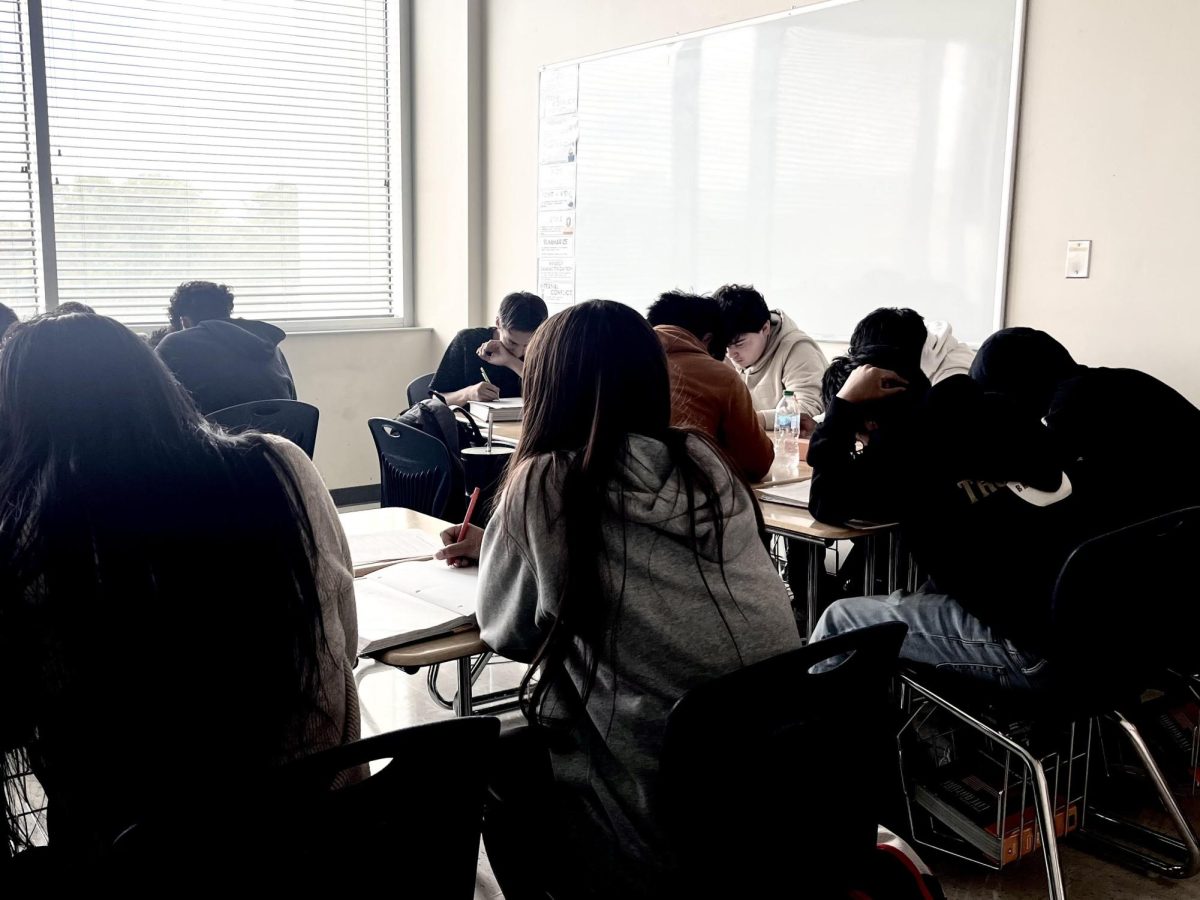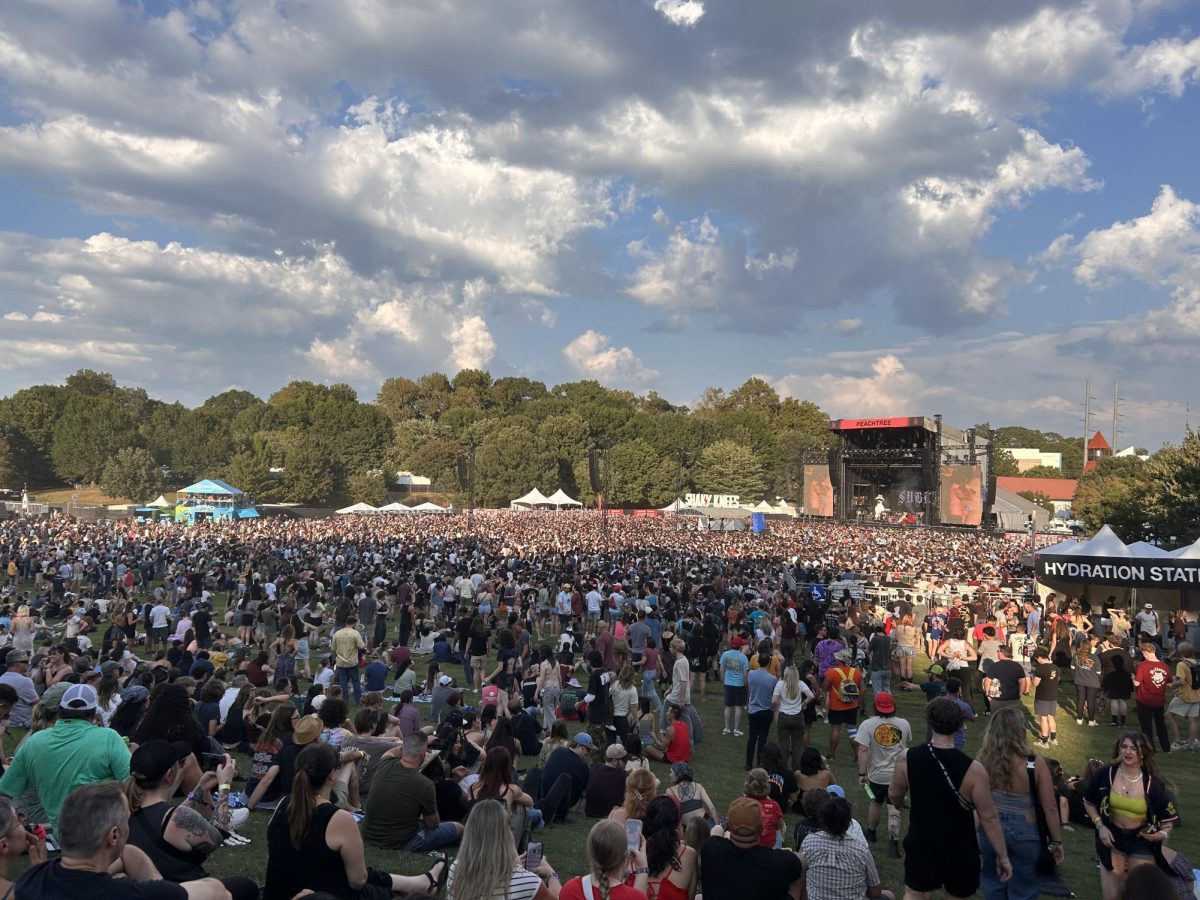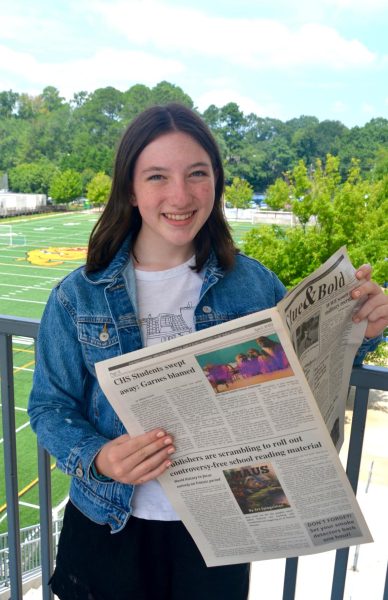One reason to love Chamblee High School is the diverse student body, with students representing many different cultures and languages. CHS has a large percentage of students who speak languages other than English (mostly Spanish), whether they are native to the US or not. English as a Second Language, or ESL/ESOL students have to put a lot of effort into learning English, whereas a born-and-raised American may take knowing English for granted. English as a Second Language students have to struggle in ways other students don’t, but CHS has programs, classes, and ESOL teachers to help.
This year, teachers who aren’t necessarily ESOL-certified have been tasked to teach students who may not know any English at all. For teachers who don’t know Spanish as well, they say the language barrier is the hardest part. Mr. Brain Ely, an ESOL Social Studies teacher, can understand spoken Spanish better than he can speak it himself.
“It’s so easy for me, having spoken and been around English all my life to take for granted just how challenging the language is,” said Ely. “Some of the just sayings, phrases, and colloquialisms that come with it that I use in regular conversation are not intuitive for others.”
An ESOL geometry teacher, Mr. Nathaniel Berryman, says that not knowing much Spanish has actually greatly benefited him and the students.
“I’ve actually learned lot more Spanish in the last two or three years than I ever would have; [however], I can’t give [the students] the easy way out. They have to really practice much harder in my class to learn English because I can’t go between Spanish and English at the same time,” said Berryman.
Ms. Theresa Abernathy knows a little Spanish but has been tasked with teaching an ESOL world history class for the first time this year. Her Spanish may not be enough to communicate in depth with her ESL students, but luckily, there is an ESOL teacher in the room to assist Ms. Abernathy during that class period. Even still, teaching an ESOL class is harder than Ms. Abernathy expected.
Students alike find the language barrier difficult. Omar Cisneros (‘26) and Ana Hernandez (‘25) are both students who have been in ESOL classes since they were in middle school, and they say that it would be incredibly beneficial to have more bilingual teachers. The two students remarked on how good their teachers were at communicating with them despite the language barrier, including teachers Ms. Robin Mask, Dr. Claudia Hagan, and Mr. Fred Avett.
The language barrier is tough for a lot of teachers who have ESL classes this year, but that isn’t a problem for all teachers. Ms. Miriam Davidow speaks Spanish and teaches literature to ESL students. The hardest part for her is the fact that all her students are at different levels of speaking, understanding, writing, and reading the English language.
“In one class, I have students who have been in the country for less than a year, students who have been in the country for five years, and students who have been in the country for their whole lives. And then within the [class]…you have kids that want to learn and don’t want to learn,” said Davidow. “[I’ve] got all these different levels, all these different motivations, and it’s hard to sometimes find the right activities for everybody because not everybody’s going to be challenged every day, and not everybody is going to succeed every day. It’s hard because I want them to.”
Ms. Davidow’s passion for her students to succeed is real, despite challenges.
“I love words and languages, and I want students to just not feel some of that passion on their own. [I want them to] find themselves in what they read, [and] know that they’re not alone,” says Davidow.
Mr. Weddle, a new-to-CHS calculus teacher, is teaching an ESOL algebra class this year. He taught English as a Second Language students at his previous school, but this year his algebra class is completely ESL. He says he loves the growth in the students he sees not only throughout the year but daily.
“I’ve been surprised by how eager they are; they really want to learn and understand. They come in excited to be in here and asking questions, and they really want to get it. Even the students who maybe didn’t get the math education before they came to the United States and are really struggling are really working their butts off [which] surprised me,” said Weddle.
Mr. Ely remarked as well on how incredible it is to watch the students grow and learn in his ESL class, not more than in his other history classes, but more drastic because he’s watching these students not only pick up the content but also grow closer to each other while learning English.
Even with all the new things happening with the ESOL program this year at CHS, Ms. Davidow wishes everyone could empathize with the ESL students.
“I would really love it if the other teachers at the school or the administration fully understood what it means to learn the language,” said Davidow. “Because being able to speak English doesn’t indicate anything except you grew up in a home where they speak English.”
Learning a language is hard enough, and moving to a country where many teachers are teaching and many classmates are speaking in a foreign language makes it that much harder. As English speakers, it’s not something we think about on the daily, but for an ESL student, their education relies on understanding English. Thanks to teachers who have stepped up with a certain lust for teaching, ESL students will be better nurtured and encouraged in learning the English language while still learning core subjects.
Ms. Davidow has a quote by Dean Koontz that hangs by her desk that she loves and wanted to share with her ESOL students: “She was fascinated with words. To her, words were things of beauty, each like a magical color or potion that could be combined with other words to create powerful spells.”
Whether English is a student’s first language or not, Chamblee teachers are committed to making sure every student can succeed.








